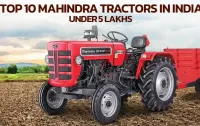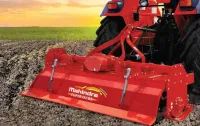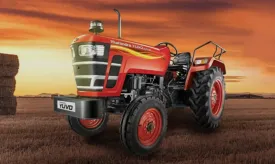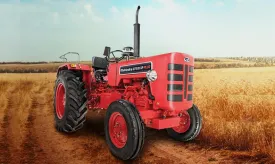Types of Harvesters for Modern Farming – Features & Uses

Different Types of Harvesters for Agricultural Farming
Harvesting marks one of the most important phases in farming, as it is when the fruits of a farmer's hard work are finally gathered. Over the years, technological advancements have drastically transformed the harvesting process, with specialized machines designed to cater to the unique needs of various crops. Harvesters play a crucial role in boosting productivity, lowering labor costs, and ensuring timely harvests, which are essential for preserving crop quality and optimizing yield.
In this blog, we will delve into the different types of harvesters used in agriculture, highlighting their distinctive features, functions, and the advantages they bring to different crops.
1. Combine Harvester: The Multifunctional Workhorse
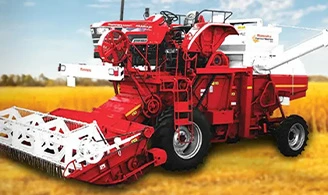
The combine harvester is one of the most widely utilized machines in modern agriculture. As its name suggests, it "combines" three essential harvesting operations—reaping, threshing, and winnowing—into one integrated process.
Key Features:
- Versatility: Suitable for a variety of crops, including wheat, rice, barley, oats, soybeans, and corn.
- Large capacity: Designed for large-scale operations, making it ideal for extensive acreage.
- Advanced technology: Modern models are equipped with GPS, auto-steering, and sensors, ensuring precise operation with minimal manual input.
2. Rice Harvester: Perfect for Paddy Fields
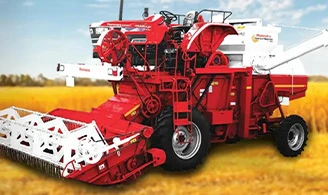
Rice harvesters are specialized machines designed for harvesting rice, especially in flooded paddy fields. These machines are built to handle the unique challenges of rice cultivation while minimizing damage to both the crop and the soil.
Key Features:
- Floating platforms: These harvesters are equipped with floating platforms that allow them to glide over flooded fields without sinking.
- Cutting mechanism: Designed to cut rice stalks even in submerged conditions, ensuring a clean and efficient harvest.
- Threshing and collecting: The machine cuts the stalks and threshes the rice, separating the grains from the straw in one smooth operation.
3. Corn Harvester: Tailored for Maize
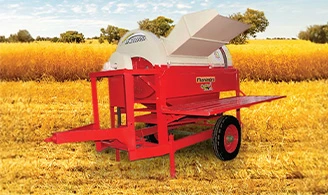
Corn harvesters are specialized machines designed for the efficient harvesting of maize (corn). These harvesters are equipped to handle the specific needs of corn harvesting, such as removing the cobs from the stalk and separating the kernels.
Key Features:
- Row units: Equipped with multiple row units to pick corn cobs from plants with precision.
- Kernel separation: After the cobs are harvested, the machine separates the kernels from the cob.
- Advanced cleaning systems: Many modern corn harvesters include systems to clean the kernels, removing dirt and debris.
4. Forage Harvester: Built for Fodder Crops
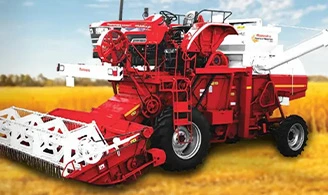
Forage harvesters are designed for harvesting grasses, alfalfa, clover, and other crops used for animal feed. These machines are especially valuable for farmers who produce silage or other types of animal fodder.
Key Features:
- Chopping mechanism: Forage harvesters chop the crop into small pieces, which makes it easier to store and process.
- Collection and blowing: These machines typically gather the chopped crop and blow it into a storage silo or trailer.
- Adjustable cutting heights: The cutting height can be adjusted to optimize the quality of the harvested crop.
5. Sugarcane Harvester: Custom-Made for Cane Fields
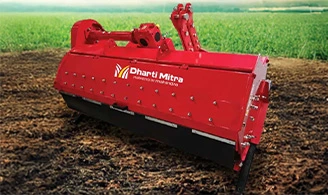
Sugarcane harvesters are large, heavy-duty machines designed specifically for harvesting sugarcane. These machines are built to handle the tall, dense stalks of sugarcane and work in challenging field conditions.
Key Features:
- Cutting mechanism: The harvester uses a cutting system to slice through the sugarcane stalks.
- Topping and cleaning: Many models include systems that remove the leaves and other extraneous parts of the plant before the cane is collected.
- High productivity: Capable of efficiently harvesting large volumes of sugarcane in a short amount of time.
6. Vineyard and Orchard Harvesters: Designed for Delicate Fruits
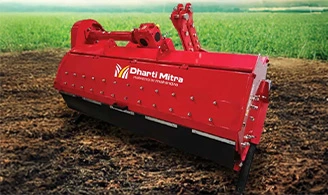
Vineyard and orchard harvesters are specialized machines for harvesting delicate fruits like grapes, apples, oranges, and other orchard-grown produce. These machines are designed to handle the fragility of fruit crops while ensuring fast and efficient harvesting.
Key Features:
- Gentle harvesting mechanism: Typically uses shaking or vibrating technology to gently dislodge fruit from plants without causing damage.
- Adjustable settings: These harvesters feature adjustable mechanisms to suit different types of crops, from grapes on vines to apples on trees.
- Sorting and collecting: Many machines come with systems for sorting and collecting the harvested fruit, reducing the need for additional manual handling.
7. Potato Harvester: Ideal for Root Crops
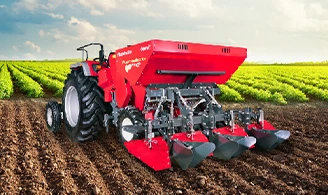
Potato harvesters are specifically designed to dig up and harvest tuber crops like potatoes. These machines feature specialized mechanisms for digging, lifting, and cleaning the potatoes without damaging them.
Key Features:
- Digging mechanism: The harvester digs into the soil to uncover the potatoes.
- Lifting and separating: Once the potatoes are exposed, the machine lifts them from the ground and separates them from the soil.
- Cleaning and sorting: Many models are equipped with cleaning systems to remove soil and debris from the potatoes.
Conclusion
Harvesters are vital tools in modern farming, helping to streamline the harvesting process, reduce labor costs, and enhance both crop yield and quality. Whether it's the multifunctional combine harvester, the specialized rice or corn harvester, or the delicate fruit harvesters for vineyards and orchards, each type of harvester plays a key role in making agriculture more efficient and sustainable. By choosing the right harvester for the specific crops grown, farmers can maximize productivity, minimize losses, and ensure a more profitable, efficient, and sustainable farming operation. As technology continues to advance, we can expect harvesters to become even more specialized, further optimizing the harvesting process and boosting productivity across the agricultural sector.









